
From the cracks in a city pavement to the slopes of a mountain woodland, edible wild plants may be found all around us. If you know where to look, there is a garden of free food waiting to be harvested.
While you’re on a tight budget, understanding which plants are edible in your region allows you to forage for extra food. Try new tastes, some of which are challenging to locate at the supermarket, and you’ll also get the advantage of discovering new favorites.
Stocking your fridge isn’t the only thing on your mind. Being aware of what you may and may not eat might help you survive in a survival scenario.
In addition, collecting wild berries is a great way to spend time. Nature teaches you a great deal about itself, and you quickly become aware of your surroundings.
Some wild plants, both common and uncommon, may be seen growing throughout North America.
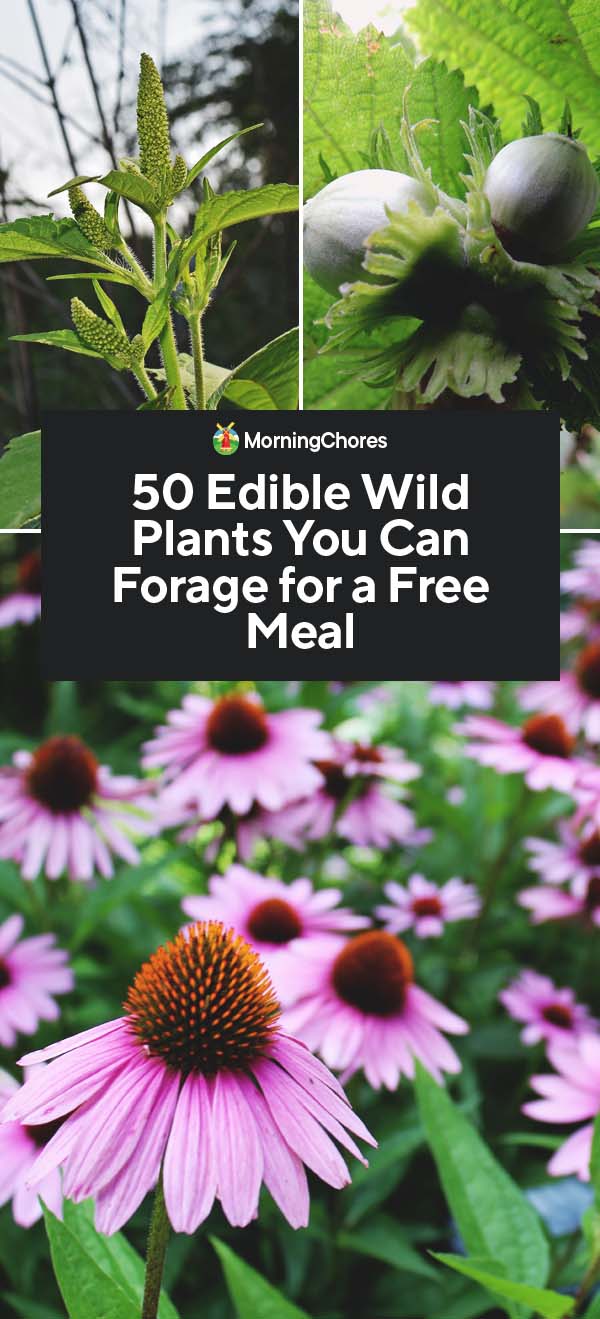
Edible Wild Plants
1. Burdock (Arctium lappa)

If you’re looking for the annoying burrs, this plant is easy to spot. Look for a rosette of oblong, pointed leaves with no stem that grows close to the ground in the first year if those aren’t present.
Flavor: Earthy and somewhat sweet.
Caution: Cocklebur has leaves that look a lot like Burdock, but they must be cooked before they are safe to eat.
2. Wood lily (Lilium philadelphicum)
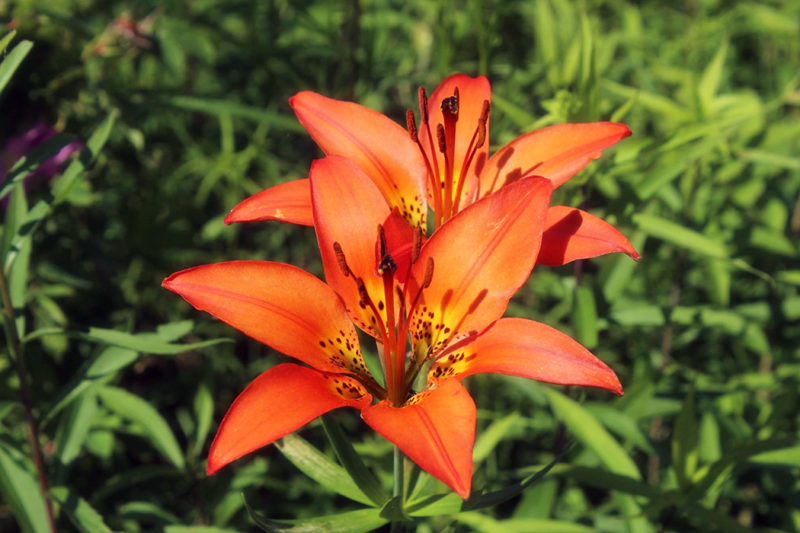
On a 1 to 3-foot stalk, look for purple-spotted orange cup flowers. Long, narrow whorls of leaves make up the stem. This species is becoming less frequent.
Edible parts: You can eat the flowers and seeds of this edible wild plant.
Flavor: This plant has a slightly peppery taste.
Caution: Not all lily varieties are edible.
3. Bamboo (Bambusoideae)

Out of the hundreds of bamboo varieties available, 110 may be consumed. Use a guide to determine which categories you may expect to see.
Edible parts: The shoots are the edible portion of the plant.
Flavor: The taste varies by variety from savory to sweet, and they’re a good way to add a crunchy texture to a dish.
Caution: Make certain you’re eating the right bamboo type. Some have a large quantity of cyanogenic glycosides. Before eating, shoots should be boiled.
4. Blueberries (Cyanococcus)

In sunny, near-water locations, blueberries develop numerous thornless canes right from the ground. Only in the northern and eastern parts of the United States do they grow wild.
Edible parts: The freshly picked berries are delicious on their own or added to desserts.
Flavor: Sweet and slightly sour.
Caution: Make sure you are identifying the plant correctly if there are poisonous berries that look like blueberries.
5. Prickly Pear Cactus (Opuntia)

Look for a cactus with wide, flat pads that has numerous branches. They may be found wild from Canada to Argentina and blossom from April to June.
Edible parts: This edible wild plant’s meat can be consumed, but you’ll need to pass through the spikes first. The fruit may also be eaten.
Flavor: Varies but may have a slightly sour taste.
Caution: It’s possible that certain cacti aren’t palatable. Before eating the meat, be sure to remove the spines and prickly sections.
6. Red Clover (Trifolium pratense)

Clover has a pea-like flavor and belongs to the pea family. Pale green foliage with a distinct chevron pattern should be sought out.
Edible parts: Anything and everything, but you should cook older leaves.
Flavor: The blossoms have a fresh, grassy taste. The rest is nutritious but not as tasty.
Caution: The red clover variety has a high concentration of alkaloids in the fall. Everyone doesn’t eat clover all of the time. It’s not safe to take it during pregnancy.
7. Kelp (Laminariales spp.)
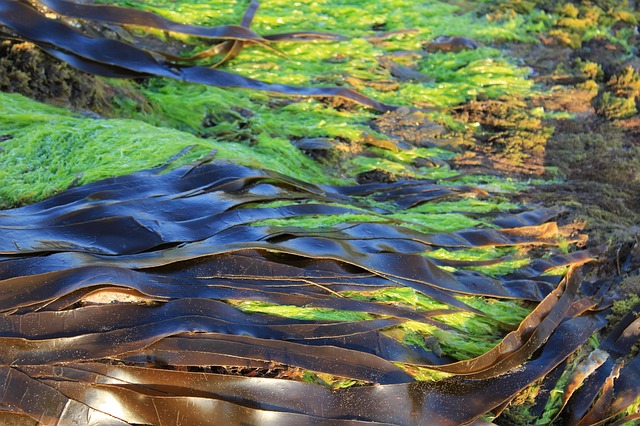
Kelp is full of fiber, has little calories, and delivers important nutrients. Seaweed or sea vegetables are other names for it. Seaweed is edible in all forms, however some varieties are more palatable than others.
Edible parts: You can eat the entire kelp plant.
Flavor: Tastes like the ocean or sea, which is unsurprising given that’s where it comes from.
Caution: Freshwater contains blue-green algae that is harmful. When kelp grows in industrial areas, it may also include lead and copper concentrate. Because it can be rotting, don’t eat kelp washed up on the beach.
8. Coneflower (Echinacea purpurea)

Thousands of years have passed since this North American native was consumed and utilized. The petals of this daisy-like blossom protrude from a thorny center cone.
Edible parts: You can eat the leaves and petals of this edible wild plant.
Flavor: This has a perfumed, floral taste and aroma.
Caution: Some flower varieties resemble yellow coneflowers which are not edible.
9. Curly Dock (Rumex Crispus)
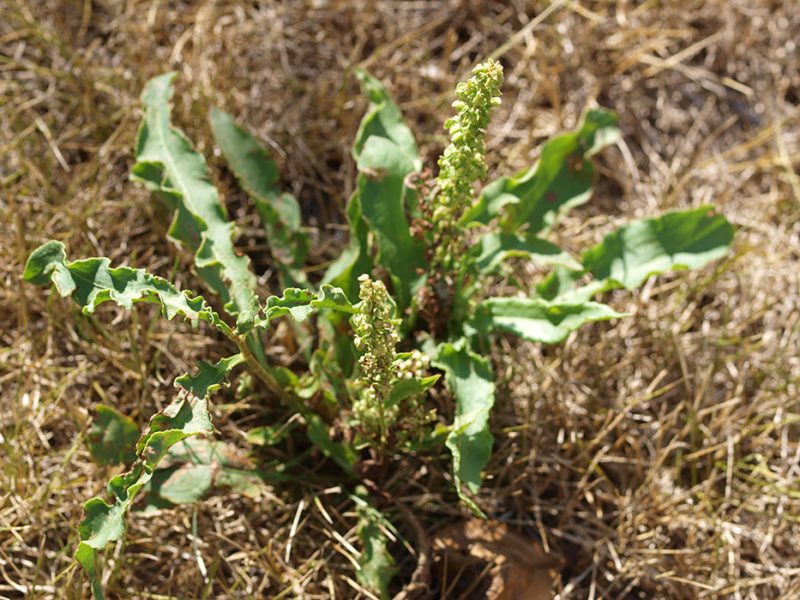
This is a noxious weed that can be found in neglected places such as parking strips, road sides, and overgrown lawns. Look for a central taproot with long, pointed leaves with a wavy border.
Edible parts: You can eat the leaves, but note that the young ones taste best.
Flavor: This has a sour kick thanks to the oxalic acid content. It has a slightly spinach-like taste.
Caution: Green plants with oxalic acid should not be overeaten. Make sure you don’t eat anything poisonous.
10. Dandelion (Taraxacum)
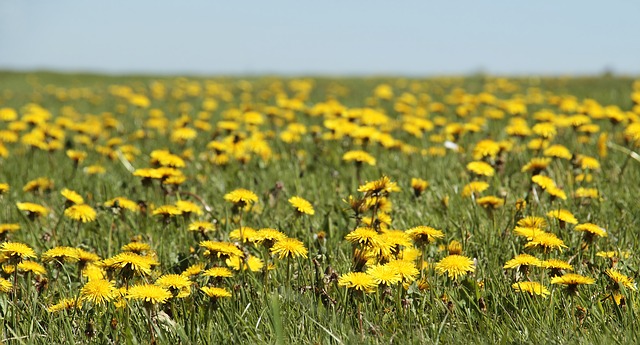
Dandelions are a little-known plant that many individuals are eager to destroy. They’re healthy, readily available, and delicious.
Edible parts: The whole plant is edible and contains many macronutrients, including plenty of calcium.
Flavor: Younger plants grown in shaded areas have a milder flavor and are not as bitter as mature plants grown in full sun.
Caution: Make sure you’re foraging in an area that hasn’t been treated with pesticides since this is considered a weed by many people.
Our video below explains more about foraging dandelions in the spring.
11. Lobster mushroom (Hypomyces lactifluorum)

The orange-red capped mushroom with bumps is known as the lobster mushroom. It’s white on the interior, and as it ages, it twists itself into all sorts of odd formations. Old-growth woods are their favorite.
Edible parts: Whole mushroom.
Flavor: The taste reminds some people of a poached lobster. It has a slightly sweet flavor with nutty notes.
Caution: It’s not a good idea to try to identify mushrooms! There are poisonous doppelgangers in a number of mushrooms. You shouldn’t dig in until a professional gives you the permission, and wild mushroom foraging requires precise identification.
12. Hazelnut (Corylus americana, Corylus cornuta)

Hazelnuts come in two forms in North America, with some European varieties having naturalized. In early August and through the autumn, nuts are ripe. Look for multi-stemmed shrubs with husk-covered brown nuts that grow to be around 10 feet tall (though they may reach up to 25 feet under ideal circumstances).
Edible parts: Nuts from this tree are edible.
Flavor: Tastes like – surprise – hazelnut.
Caution: Some states limit or prohibit foraging tree nuts, so be sure to check your local laws.
13. Wild rose (Rosa spp.)

Pink rose blooms with five petals make up wild roses. Fruits are spherical or pear-shaped, and orange or red in color when they mature. From woodland communities to roadway borders, they may be found.
Edible parts: Petals, rosebuds and young shoots and leaves.
Flavor: Fragrant, perfume-like aroma.
Caution: Wild roses look a lot like rasberry and blackberry bushes. They’re all from the rose family, which explains why.
14. Yaupon holly (Ilex vomitoria)

Until recently, many landowners were attempting to eliminate Yaupon as an invasive species (which it isn’t). It is North America’s only native tea plant. Caffeine content in a cup of tea from this plant is equal to that in a cup of coffee.
Edible parts: Dry or boil the leaves to make tea.
Flavor: Depends on how it is prepared, but it has a similar flavor to yerba mate tea.
Caution: Don’t eat the berries because they can make you vomit.
15. Cloudberry (Rubus chamaemorus)

Cloudberry is worth a try if you live in an area where it grows. A new cloudberry tastes incredible. In northern boreal areas, look for a low-growing plant with three leaves per plant. Each plant produces one light red fruit and bears little white flowers.
Edible parts: Fruit and flowers of this plant are edible. If you can find it, I highly recommend cloudberry jelly. It’s amazing.
Flavor: Tastes like a raspberry, but a little sourer.
Caution: Many berries look alike. Carefully identify the plant before consuming its berries.
16. Sweet gale (Myrica gale)

This herb is also used to treat acne, stomach discomfort, and liver problems. It’s also known as bog myrtle. The leaves can also serve as an effective insect repellent if you keep them around. This plant with flat, oblong leaves grows near bogs as a shrub.
Edible parts: Its fruit and leaves are edible and make a tasty tea.
Flavor: Slightly bitter taste.
Caution: Pregnant women shouldn’t eat this plant.
17. Fireweed (Chamerion angustifolium, Chamerion canescens)

The evening primrose family includes this lovely plant. Look for long, pointed, alternate leaves with huge purple blossoms.
Edible parts: Flowers are edible raw or cooked. Leaves from young plants can be eaten, as well.
Flavor: Depends where it’s growing, but often has a sweet and slightly citrus flavor.
Caution: Watch your quantities when eating fireweed. Too much can have a laxative effect
18. Garlic Mustard (Alliaria petiolata)
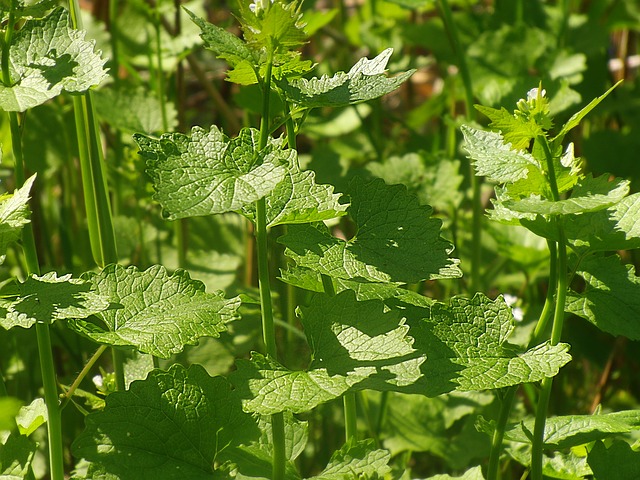
People consider this plant a weed so you can do your part to help keep it in check in the wild by eating it, which is fortunate because it’s delicious. It has scalloped leaves in a basal rosette, but the surest way to tell that you’ve found the right plant is to crush the leaves. It will smell like garlic.
Edible parts: The entire plant is edible.
Flavor: Garlicky taste. Strong aroma of garlic, too.
Caution: Ground ivy, black mustard, and fringecup are just a few of the doppelgangers. If it smells pungent and resembles garlic, you’ve found garlic mustard.
19. Fiddleheads (Matteuccia struthiopteris)
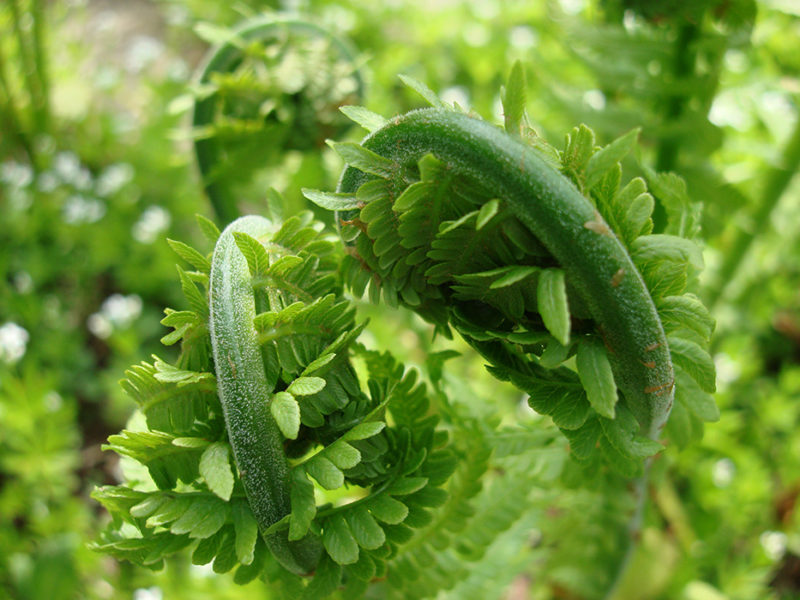
Before they have completely opened, fiddleheads are ferns. In the spring, you may see them pop out of the ground from moist, fruitful soil.
Edible parts: Furled-up fern portion of the plant.
Flavor: This edible wild plant has a mild asparagus flavor mixed with a bit of spinach, as well.
Caution: Remember that crescent-shaped edible ostrich fern fiddleheads are the ones to look for. The identification of poisonous ferns is critical.
20. Wood Sorrel (Oxalis)

Even though it isn’t a shamrock, wood sorrel is sometimes mistaken with clover and is therefore known as American shamrock. Search for three heart-shaped leaves that have been joined together. A crease will run down the center of each “heart.” The pink, white, and lavender blooms may be seen when it is in bloom.
Edible parts: Cooked leaves and blooms have a milder flavor and eliminate toxic chemicals, which is why they are edible raw.
Flavor: Sour flavor thanks to its oxalic acid content.
Caution: Like other sorrel varieties, this edible wild herb contains oxalic acid, which is harmful to eat. This component is both harmful and acidic, hence the component’s pungent flavor. It’s not safe for dogs to eat.
21. Wild Leek (Allium tricoccum)

Ramps or ramsons are other names for this. These are wild edible plants, so you’ve hit the jackpot if you can find them. They’re delicious. Wild leeks may be found in the damp soil under trees in the spring. They emerge from a white bulb with two or three large, smooth leaves. Since ramp populations are dwindling, don’t collect the bulb; it takes five years or more for a ramp plant to grow mature.
Edible parts: The bulbs and leaves are edible, but we recommend leaving the bulb in the ground to create a new plant.
Flavor: No surprise, tastes like leek!
Caution: Be careful since Lily of the Valley is a poisonous impersonation. Only in the eastern and midwestern United States do they grow.
22. Chickweed (Stellaria media)

This European-native plant can be found growing wild in moist soil in lawns and cool, shady spots.
Edible parts: You can eat the leaves of this plant raw, but they taste better if cooked.
Flavor: Spinach-like flavor.
Caution: Don’t eat too much of this plant at one time.
23. Broadleaf Plantain (Plantago major)

This herb may be used to cure diarrhea and digestive problems as well as being filled with nutrients. Look for rosette-shaped leaves with an oval or egg-shaped form. Strings that resemble celery can be found when the stems are broken.
Edible parts: Leaves are edible.
Flavor: Earthy taste with a slightly spicy peppery taste.
Caution: You can mistake young lily plants for broadleaf plantain.
24. Lamb’s Quarters (Chenopodium album)

This ubiquitous weed can be found growing practically anywhere humans exist. Look for diamond-shaped leaves with a flour-like coating on the bottom surface.
Edible parts: All parts are edible.
Flavor: This edible wild plant has a salty taste.
Caution: This plant should not be overeaten. Because the chemicals in lamb’s quarter may limit the absorption of certain minerals, it should not be eaten on a daily basis.
25. Coltsfoot (Tussilago farfara)

Coltsfoot leaves have a heart-shaped, waxy appearance, despite the fact that the blossom looks similar to dandelion.
Edible parts: Flowers, stems, and leaves.
Flavor: Fresh tasting, some describe it as having a mild melon flavor.
Caution: This plant should not be consumed by pregnant women, and the leaves may contain small concentrations of contaminants, so don’t overindulge.
26. Jerusalem artichoke (Helianthus tuberosus)

A sunchoke is a term used to describe this wild plant, which belongs to the sunflower family. Because of the brilliant yellow blooms and oval leaves that grow in clusters, it’s simple to identify.
Edible parts: The tuberous root can be eaten raw or cooked.
Flavor: Delicious, nutty flavor.
Caution: You might confuse this plant with a perennial sunflower. Young sunchokes can cause gas.
27. Bluebead (Clintonia borealis)

Edible parts: You can eat the leaves of this plant, but the rest of it is poisonous.
Flavor: Taste somewhat like cucumber. The younger the plant is the better the flavor it has.
Caution: This plant is part of the lily family, and many plants in this family are poisonous. The berries, roots, and flowers of this plant are toxic.
28. Mullein (Verbascum thapsus)

Look for this biennial to grow in dry, sunny areas every two years. The towering, upright stem with yellow flowers is simple to distinguish, but the big, velvety leaves are also basic to locate.
Edible parts: You can eat the flowers and leaves.
Flavor: Makes a better tea than eaten raw.
Caution: Some people are allergic to this plant, particularly the little hairs that grow on the leaves.
29. Queen Anne’s Lace (Daucus carota)

This plant thrives in environments that other plants can’t tolerate. A solitary purple dot in the midst of the white blossom is common. A domestic carrot looks similar to the leaves.
Edible parts: Leaves and roots can be eaten.
Flavor: The foliage has a strong carrot-like odor, which is why it’s also called wild carrot. Some, on the other hand, consider the root to be mildly sweet. Plants that are older might have a bitter taste.
Caution: Watch out, this plant looks like poison hemlock and giant hogweed.
30. Cattails (Typha latifolia)

You may eat this plant as well as utilize it to make baskets or mats, which is why it’s known as bulrushes. The skull can be utilised as a candle by being coated in fat. On a tall stalk, look for a brown cigar-like head.
Edible parts: Inner part of the plant, roots, flower spikes, and pollen can be consumed.
Flavor: Generally sweet, but taste varies depending on growing location and environment.
Caution: Don’t mistake this for the blue flag iris (Iris versicolor). They grow in similar areas.
31. Morels
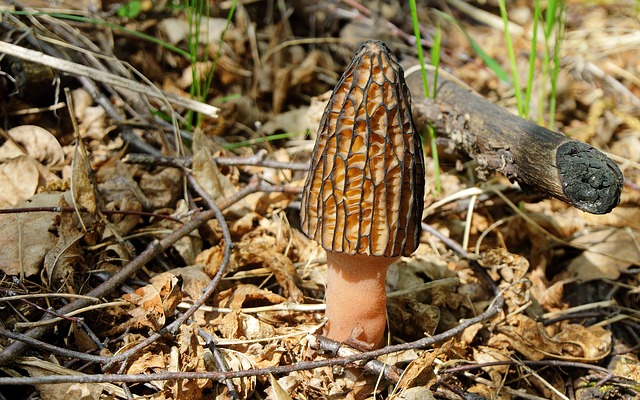
You can only find them in the wild, and they are worth the effort. Morels aren’t farmed. They may be light brown to dark gray in color and are oblong or bulbous in shape. Before eating, make sure to ask a expert whether you have chosen the right mushroom.
Edible parts: Entire morel.
Flavor: Morels have a delicious nutty taste.
Caution: Toxic false morels may cause severe symptoms if eaten. Before you eat, speak to an professional in certain situations where it might be deadly.
32. Self-heal (Prunella vulgaris)

Lawn owners hate self-heal, but foragers love it. It has tiny purple tubular blooms that grow in clusters with ovate leaves.
Edible parts: Leaves.
Flavor: Somewhat bitter tasting.
Caution: Make sure not to mistake this for ground ivy.
33. Amaranth (Amaranthus retroflexus)

Pigweed is the name given to this plant, and it can be found growing wild in fields or abandoned gardens. The easiest way to identify this plant is by its stem. It stands tall and is covered in thick, short hairs with a reddish color on the top portion.
Edible parts: Both wild and domesticated types of this plant may be eaten. While some portions are best prepared before consumed, you may eat the whole plant.
Flavor: Amaranth has a delicious, nutty flavor.
Caution: Be sure to pick from areas that haven’t been poisoned.
34. Pickleweed (Salicornia europeae)

Chefs prize this salt-loving plant because of its savory flavor. It favors the coasts, although it may also be found inland near salty water. It has a succulent-like leaf and shooting branches on the opposite side.
Edible parts: Top parts of the stems can be consumed raw or cooked.
Flavor: This edible wild plant has a mild salty taste.
Caution: Make sure that the saltmarsh ecosystem you’re harvesting from hasn’t been overharvested, because this plant is an important part of it.
35. Yarrow (Achillea millefolium)

As it grows up the stem, Yarrow’s feathery, lance-shaped leaves get smaller. Flowers have spherical clusters of little, white blooms that bloom from spring to fall. It’s a versatile plant that thrives in a wide range of environments.
Edible parts: The leaves of this plant are edible.
Flavor: This has a slightly bitter flavor.
Caution: Poison hemlock and water hemlock look a lot like yarrow, so be sure to identify the plant correctly.
36. Catnip (Nepeta cataria)
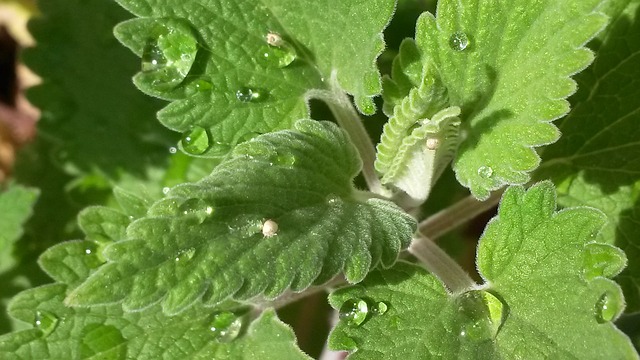
Almost anyplace, catnip thrives. The fuzzy, arrow-shaped leaf with rounded teeth along the margins is a good place to start. It’s a part of the mint family, and it has a slight minty odor.
Edible parts: Eat the leaves and young flowers.
Flavor: Tastes reminiscent of mint.
Caution: Catnip has a rough, harsh appearance similar to that of wood nettle. You may also get a sting from wood nettle if you touch it.
37. Chanterelles (Cantharellus cibarius)

Finding the golden, wavy chanterelle mushroom is like finding a pot of forest gold. They are delicious.
Edible parts: You can eat the whole mushroom.
Flavor: They are prized for their strong, savory flavor that has a hint of woodsy pepper.
Caution: It’s crucial to have proper identification. Many mushrooms seem to be identical, although they are deadly. Jack o’lanterns and false chanterelles are two types of lookalike chanterelles. Always talk to a professional before you decide what kind of forage you’re looking for.
38. Elderberry (Sambucus canadensis)

Elderberry is an ornamental plant that belongs to the honeysuckle family. East of the Rocky Mountains, it is native to North America. On a medium-sized shrub, look for compound leaves. Black berries in umbrella-shaped clusters are visible when fruiting.
Edible parts: The flowers and fruits are edible.
Flavor: They can be tart, sweet, or tangy depending on where they are growing and how ripe they are.
Caution: Don’t mistake this for water hemlock.
39. Stinging Nettle (Urtica dioica)

While they are nutritious and delicious, it’s a pity that stinging nettles have such a bad reputation. The razor-sharp teeth on the margins of the arrow-shaped leaves are a giveaway. When you feel the bite, you know you’ve found it.
Edible parts: You can eat the leaves, stems, and roots.
Flavor: This edible wild plant tastes a lot like spinach.
Caution: When collecting this herb, wear gloves and long sleeves. When they’re younger, they’re at their best. To eliminate the sting, you’ll need to cook them.
40. Watercress (Nasturtium officinale)

Watercress thrives in shallow running water in thick mats, as the name suggests. It contains a lot of vitamins and minerals.
Edible parts: The leaves, stems, and flowers are edible.
Flavor: Mild to bold peppery, horseradish flavor.
Caution: Always wash before eating, and make sure you’re picking from safe water sources.
41. Wild Onion (Allium bispectrum, Allium canadense)

The onion-like fragrance distinguishes this grass-like plant. It produces little white bulbs underground and creates small six-petaled blossoms. It thrives in well-developed soil.
Edible parts: The entire plant is edible.
Flavor: Tastes like a mild onion.
Caution: There are poisonous wild onions in the lily family. Since it will reveal whether the plant is edible or not, smelling it is crucial.
42. Common Milkweed (Asclepias syriaca)

Monarchs Butterfly caterpillars eat milkweed exclusively, but humans can enjoy it as a snack. It should be a last resort for nutrition, since it is bitter and contains toxins.
Edible parts: Leaves, flower buds, and pods.
Flavor: Although this herb may be bitter, boiling makes it easier to swallow. It has a green bean flavor.
Caution: In large amounts, the sap from this plant may be harmful to people and animals.
43. Blackberries (Rubus spp.)
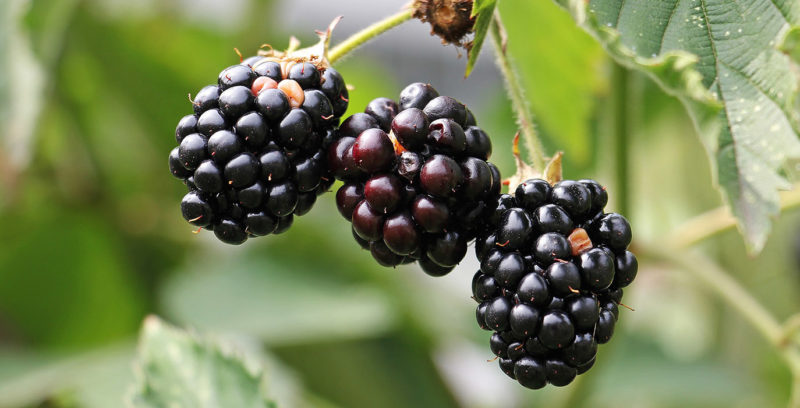
The United States is home to genuine blackberries, which are a delightful fresh fruit to eat. Himalayan blackberries, which are a relative of blueberries, grow wild on the west coast no matter whether you want them or not. They resemble trailing blackberry bushes despite the fact that the fruit isn’t nearly as sweet as a real blackberry.
Edible parts: Leaves, shoots, and berries.
Flavor: Green tea leaves are flavorings on the leaves. Berries come in a variety of flavors, from sweet to sour, and may be anywhere.
Caution: Forage away from roads to avoid pollutants.
44. Gooseberries and Currants (Ribes spp.)

In North America, there are around 100 different types of gooseberries. These beautiful berries first appear in the fall in chilly areas and delightfully explode. The leaves have scalloped edges and are covered in thorns. They resemble maple leaves. From light gold to dark red, the berries may range in color.
Edible parts: Berries.
Flavor: Depends on the type, but currants can be mealy or tannic, while gooseberries tend to be tart.
Caution: Some gooseberries are covered in spikes. Boil and mash the spiky kind before forcing it through a strainer.
45. Sheep Sorrel (Rumex acetosella)
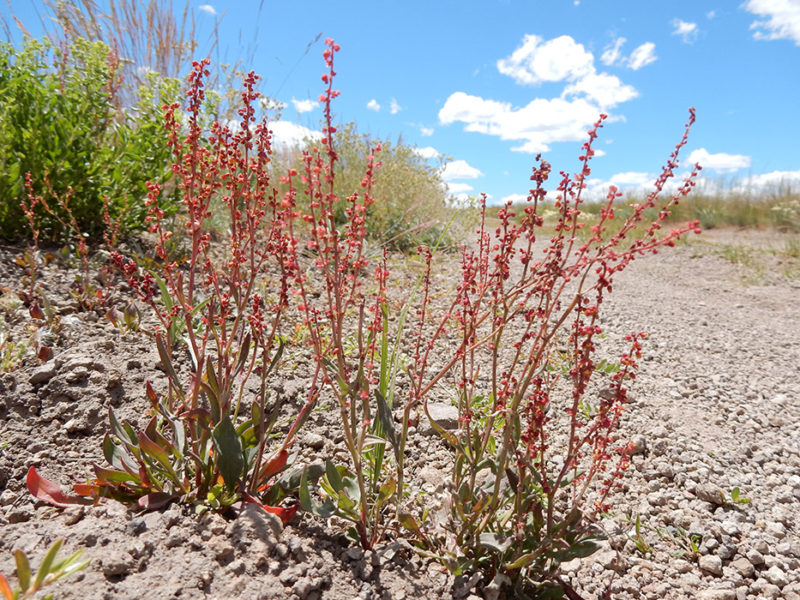
The buckwheat family includes sheep sorrel. In the spring, it features arrow-shaped leaves with crimson stems and tiny flowers.
Edible parts: Leaves and seeds.
Flavor: This has a lemony, tart taste.
Caution: Only eat this edible wild plant raw in small quantities
46. Miner’s Lettuce (Claytonia perfoliata)

Edible parts: Flower, leaves, and roots.
Flavor: Earthy and sweet.
Caution: If you eat too much of this plant, it can have a laxative effect.
47. Wild Ginger (Asarum caudatum, Asarum canadense)
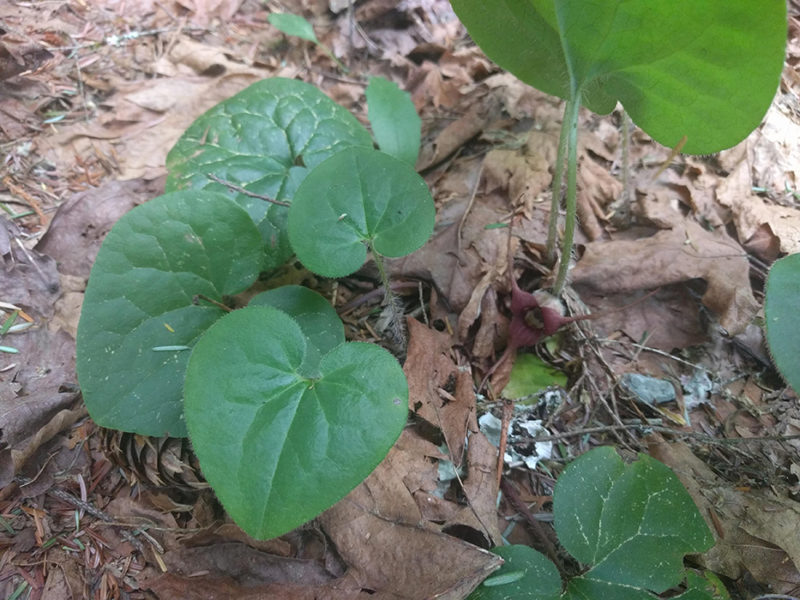
This shade-loving edible wild plant has heart-shaped leaves that grow low to the ground. It looks similar to coltsfoot.
Edible parts: Snack on the rhizomes and leaves.
Flavor: Commercial ginger doesn’t have a flavor like this. It has a mild peppery taste with a modest amount of ginger.
Caution: Because it contains an acid that can be a diuretic, don’t overeat this plant.
48. Wild Strawberry (Fragaria virginiana)

A wild strawberry has a distinct flavor than cultivated strawberries. These are similar to the ones you have in your garden, but smaller.
Edible parts: The berries.
Flavor: Tastes like an intense strawberry.
Caution: Can be confused with mock or false strawberries.
49. Purslane (Portulaca oleracea)
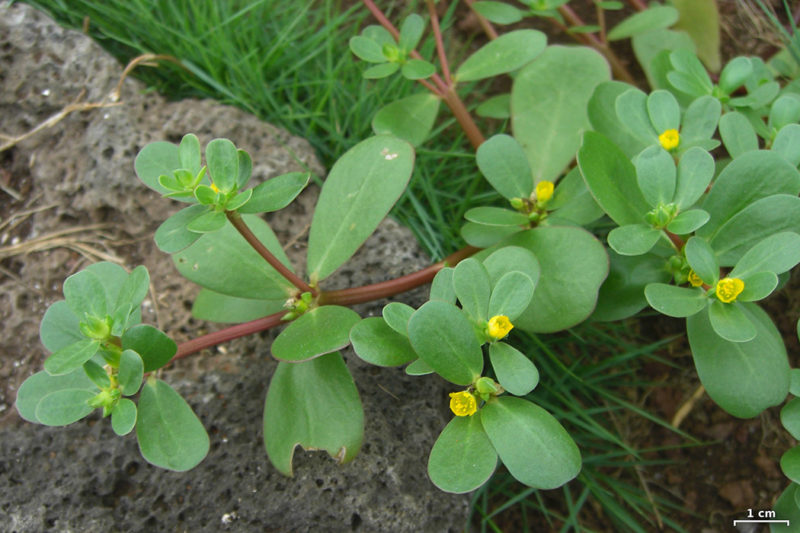
This delicious weed thrives in cracks in sidewalks and beneath trees, and it may be found growing all around cities and suburbs. It’s healthy and may be consumed raw or cooked.
Edible parts: Flowers, leaves, and stems.
Flavor: It can be mildly salty or citrus-like, like a green apple, depending on where they grow.
Caution: Spurge may resemble spurge, which is poisonous and a nasty weed. If the package is opened and there’s white liquid inside, don’t eat it.
50. Acorn (Quercus)

Acorns are edible, and you may have seen them strewn about on the ground in parks and forests. A substantial portion of the starch in the tiny nut is difficult to forage. To make a flour alternative, crush the nuts.
Edible parts: While you should crush, roast, or leach the nuts before eating them, you may eat them raw.
Flavor: Tannins vary greatly between oak trees, which affects the flavor. Sweet, nutty, oily, or bitter characteristics may be present.
Caution: “Look for a hole in the shell, which means the dreadful oak weevil has infested the nut,” he advises. These raw foods might cause constipation if you eat them.
Note
When looking for edible wild plants, identification is crucial. It’s possible to make a bad choice when it comes to food. Unintentional poisoning and, in some circumstances, death can result from misidentification.
Knowledge of the plants that may be safely consumed is just part of the equation when it comes to identifying edible wild plants. You should also be aware of which foods are not safe to consume.
The best way to understand something is to do it. Find someone who will teach you how to identify plants. When you find a plant with a lookalike, it can be difficult to tell the difference. If you’re a beginner, having a guide as a backup is especially helpful.
Being extremely cautious is your best bet for safe foraging. Don’t eat the plant if you have any doubts in your heart.
Also, keep in mind that volume matters. You can eat a small amount of many edible wild plants, but some can be poisonous in large amounts. Believe it or not, this includes common plants like spinach and swiss chard.
What if Identification is not possible?
You can perform a skin or tongue test if you’re in a life or death situation where 100% certain identification of an eatable wild plant is not possible. This should be attempted only if you need to eat the plant to stay alive. DO NOT eat the plant material if your skin reacts in any way. DO NOT eat the plant if your tongue burns or goes numb after eating it. Ultimately, if there is even a hint of doubt in your mind, don’t eat it. Rather than poison yourself, go hungry.
Avoid plants with white streaming sap, seeds or legumes from plants you haven’t been able to identify, and plants with spiky or pointed features while looking for food in the wild. In some circumstances (when appropriately identified), plants with needles or spikes may be prepared, but they should never be eaten raw.
